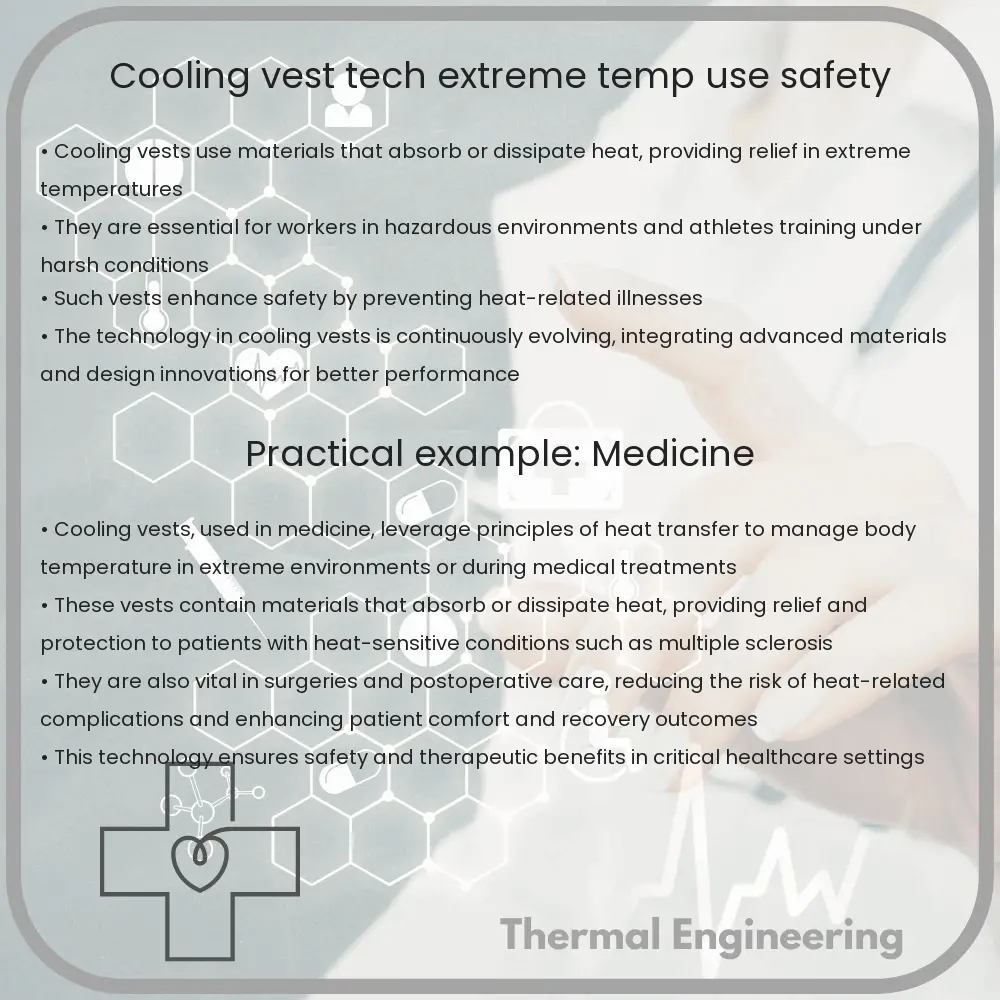Learn about cooling vests, their technology, applications in extreme temperatures, and key safety considerations.

Understanding Cooling Vests: Technology, Applications in Extreme Temperatures, and Safety Considerations
Cooling vests are innovative devices designed to help regulate body temperature in various environments, ranging from hot climates to controlled industrial settings. These vests are increasingly being used by athletes, outdoor workers, individuals with medical conditions, and others to combat heat stress and maintain optimal performance.
How Do Cooling Vests Work?
The technology behind cooling vests varies, but most operate on a few basic principles. The most common types include:
- Phase Change Material (PCM) Vests: These vests contain substances that melt and solidify at certain temperatures, absorbing and releasing heat. PCM vests are activated by chilling them in a freezer or a refrigerator before use.
- Evaporative Cooling Vests: These are soaked in water and utilize the principle of evaporative cooling as the water evaporates from the fabric of the vest, taking heat away from the body.
- Circulating Cold Water Vests: Using a system of tubes and a pump, cold water circulates throughout the vest, drawing heat away from the body.
Each type of cooling vest has its own set of benefits and limitations, influencing their suitability for different situations and environments.
Applications in Extreme Temperatures
Cooling vests are particularly valuable in environments where extreme temperatures can lead to serious health risks such as heat exhaustion or heat stroke. Key applications include:
- Industrial and Construction Settings: Workers in these settings often face long hours in hot conditions. Cooling vests can help maintain a safe body temperature, reducing the risk of heat-related illnesses.
- Sports and Fitness: Athletes use cooling vests to improve comfort and performance in training and competitive environments, particularly in hot weather.
- Healthcare Applications: Patients with medical conditions that affect body heat regulation, such as Multiple Sclerosis, often wear cooling vests to help manage symptoms.
- Military Use: Military personnel deployed in hot climates use cooling vests to reduce heat stress during rigorous physical activity.
Safety Considerations
While cooling vests offer significant benefits, proper usage is essential to ensure safety:
- Hydration: Cooling vests are an aid in heat management but do not replace the need for regular hydration. Users should continue to drink water regularly.
- Monitoring Duration of Use: Depending on the technology, some cooling vests may need regular reactivation (re-wetting, re-freezing, or recharging) to continue providing effective cooling.
- Skin Protection: Direct contact with cold sources, particularly in circulating cold water and PCM vests, could risk skin damage without proper barriers or adjustments in cooling intensity.
In conclusion, cooling vests are a vital tool in enhancing comfort and safety in extreme temperatures. By choosing the correct type of cooling vest and adhering to safety guidelines, users can effectively mitigate the risks associated with heat exposure. As technology advances, the effectiveness and applications of cooling vests are expected to expand, offering even greater support in combating heat-related challenges.